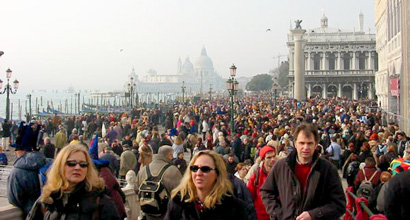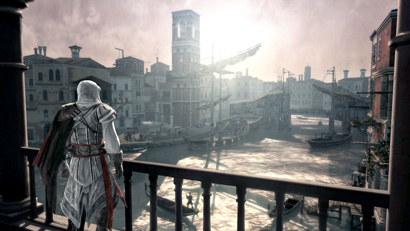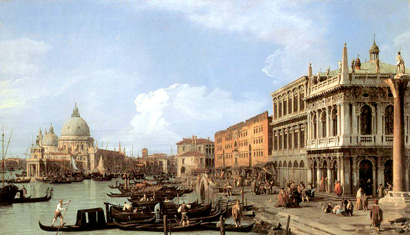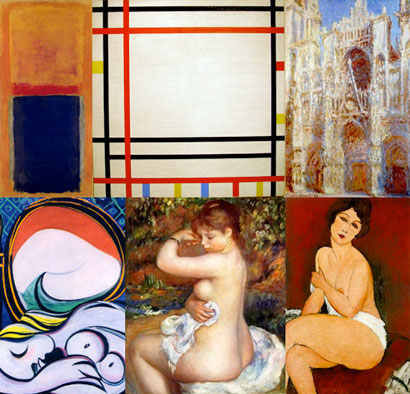
Tourists in Venice, Francesca Catozzo
Everybody hates tourists. Tourist guide books are filled with tips on how to avoid other tourists. And most residents consider tourists as external to real life in their habitat. We have spent a few days in Prague this Summer. As tourists. As some of the many many tourists who were there. It was an eye-opening experience.
Prague is a beautiful city. Almost too beautiful. There isn’t a single building in the inner city that doesn’t have at least one interesting architectural detail. It almost feels fake. So much beauty in one place. And then I’m not even talking about the really spectacular buildings like Saint Vitus cathedral, that seems to have a permanent long line of tourists -hoping to see the undoubtedly equally spectacular interior- attached to it.
Tourists were everywhere. You couldn’t turn your head without seeing a few. And, given the hot weather, they were invariably dressed in ways that could barely contrast more with the majesty of the surroundings. Prague very much felt like a theme park.
But I got over my initial disappointment, when I came to the conclusion that all of these thousands of people, however bad their dress sense may be, had one thing in common, one thing that drove them as far as tolerating each other’s unwanted presence: their love for art. I was surprised by that realisation. Usually I tend to consider the mundane or the popular to be at odds with any actual interest in art. But Prague proves the opposite.
The problem, however, with all these people being so interested in art is that they are ruining the experience for each other. There’s not a single tourist in Prague who doesn’t wish for the all the other tourists to disappear. We all want the same thing. We just don’t want it together.
This problem will not go away. It is in Prague’s best economic interest to keep the streams of tourists coming. The locals don’t seem to have a lot of affinity anyway with all those great buildings erected by people who occupied the city in the past. They seem to be perfectly content exploiting these alien artifacts.
None of this contributes to the desires of the tourists however. Tourists don’t go to Prague to visit the souvenir shops or wait in line for the cathedral. They want to experience a foreign place, filled with residents who go about their own business. They want to discover the cathedral on their own, find a great meal in a small family restaurant. If possible even make friends with the locals. But as tourism expands, the likelihood of such an experience ever happening shrinks. Is there even still a city on this planet that is both remarkable for its art and atmosphere, and free of tourism? I highly doubt it.

Assassin's Creed 2, Ubisoft Montreal
Enter the videogame. Assassin’s Creed 2 shows us a glimpse of what tourism may be like in the future. An authentic experience of an exotic culture, not only far away in space, but also in time. We can visit Florence and Venice without a single tourist in sight! With no lines in front of the museums. In fact, we get to purchase all those masterpieces ourselves and hang them in our uncle’s fortified villa in the countryside. We even make friends with Leonardo Da Vinci and Lorenzo Di Medici! If that doesn’t sound like the perfect vacation, what does?
Assassin’s Creed is a dream come true for the virtual tourist. The care that went into the creation of its cities and landscapes is astounding. Even if the environments are not exactly realistically laid out and even if certain architectural elements are repeated here and there, they somehow manage to feel more real than the real life theme parks filled with toursists that our actual cities have become. Do we even want to visit real Venice? Would we not rather visit the Venice that we always dreamed of, the Venice that romanciers talk about in books, that painters show on their canvases? The Venice that we desperately seek but find nowhere when pacing through the cobbled urban streets.
Ubisoft Montreal is giving us a Venice that is better than the real thing: the Venice of our dreams.

The Molo -looking West, Canaletto (1730)
With one or two frustrating exceptions, the unremarkable story and gameplay do not stand in the way of what truly makes Assassin’s Creed 2 a joy to experience. This is what the medium of videogames is made for: the exploration of carefully designed environments, the encounter with virtually living beings, the immersion in a fictional community, connecting to it, making new friends, amusing the locals, observing the passers-by, or running away from it all and finding refuge with the eagles on the tops of one of the many towers.
The joy of Assassin’s Creed 2 doesn’t come from its action-packed story arc or its ultra-linear rollercoaster game structure. It comes from the capacity of the carefully designed environments for stillness. In Assassin’s Creed, we can spend hours simply being. With no progress and no change other than the wind and the sun and the clouds. Such an oasis where time stands still, is a rare luxury. This sort of thing literally does not exist anymore, outside of videogames. A place where we can simply, innocently just be and enjoy how what we see and hear makes us feel.
The feeling of luxury is heightened even by the realisation that the production of such an intricate piece is not cheap. With a rumoured production budget of well over 20 million Dollars, Ubisoft puts a work of art in our hands that goes well beyond anything most of us could ever afford. For that amount of money, one could have purchased any one of these modern masterpieces (source):

This is the luxury of the digital: to experience works of art in ideal circumstances. Because they were made for us, to be played by us, holding that specific controller, running on that specific console, displayed on a normal television set. No reproduction. No facsimile. No reduced quality. The real thing, as it was intended by the artists.
This sort of title makes one dream of the potential of videogames as a medium. And I don’t use the word “medium” lightly. I mean it in the very same sense as it is used for books, cinema, literature and music. Games, like sports, are not media. They are pleasant activities, even potentially deeply meaningful to their players. But they are not media. Media are platforms that serve communication, media allow for producing and appreciating authored content. In Assassin’s Creed 2, we can get a glimpse of how radically different a medium videogames will become when they finally embrace their destiny. Videogames can depart from cinema in equal measure as cinema departed from painting. Perhaps even exponentially so. Such is the immensity of the step from one medium to the next. And with that explosion of possibilities, comes a widening of the mind’s eye of unseen proportions. We have literally no idea of how videogames may make us feel in the future, of what they will make us see and think.
With any luck, they will encourage the tourists to stay home, in front of their television sets, where they can have far superior experiences. Returning our cities to their inhabitants, and reconnecting our dreams to reality. Videogames as an expansian pack for the imagination.